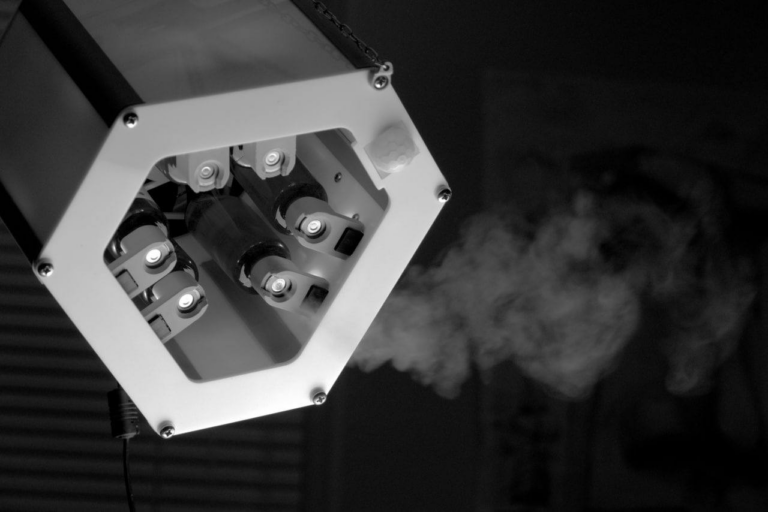Youth roadster “Crimea” – new horizons
The design bureau of the project is developing a Russian youth sports car, completely built using domestic components. Units and assemblies manufactured by AvtoVAZ were selected as a component of the base to ensure affordability and maintainability.

To date, there are already two Crimean roadsters, and active work is underway on the digital twin of the third prototype and the production of a batch of load-bearing systems. The results of the current work were presented at the recently held international forum “Open Innovations” in Skolkovo and at the exhibition “Technoforum 2020”. In our new article we would like to share the latest news and plans of the team of the project “Roadster Crimea”.
What’s inside?
The vehicles are based on a space frame of our own design. Roadsters have a mid-engined layout and rear-wheel drive. The exterior of the car was developed by the project designers and embodied in the form of lightweight and durable composite panels. While working on a project, young engineers conduct virtual crash tests of a car in specialized software environments; make aerodynamic and strength calculations; working on their own roof folding mechanism, optics, ergonomics, power plant tuning; change the geometry and kinematics of the suspension and solve many other non-trivial problems. Many auto component manufacturers support the Crimea Roadster project and, within the framework of cooperation, provide their own products free of charge.

On the created prototypes, the development of the design bureau was applied in the form of a spatial bearing system. This design allows for the fabrication of a supporting system of pipes and sheet metal. Manufacturing stages include laser cutting and bending of metal, assembly and welding of couplings, laser cutting of pipes and their bending, bending of sheet elements, assembly and welding of the entire frame structure. As a result, the support system is very light, rigid and technologically advanced.

Several enterprises in Moscow and the Moscow region help the team of young engineers in the manufacture of components for supporting systems, manufacturing products on preferential or even free terms.
The carrier system is worked out in an iterative way, the KB engineers calculate it for compliance with the standards, breaking it in virtual crash tests in specialized software environments. In each prototype, the frame structures are different due to the use of various design and technological solutions.
General characteristics of the first prototype roadster are presented below:
• Overall dimensions, mm
– length: 3848
– width: 1680
– height: 1195
• Base, mm: 2470
• Mass of the vehicle in running order, kg: 1030
• Technically permissible maximum mass of a vehicle, kg: 1450
• Internal combustion engine: VAZ 21127
– number and arrangement of cylinders: 4, in-line
– working volume of cylinders, cm3: 1596
• Power system: injector
• Ignition system (type): electronically controlled with individual ignition coils
• Transmission: mechanical
• Suspension: independent (MacPherson type) with telescopic hydraulic shock-absorber struts, helical conical springs, lower wishbones with stretch marks and anti-roll bar
• Steering: pinion-rack (with electric booster)
• Tires: 225 / 35R18

When creating the second and third prototypes, the developers sought to reduce the weight of the car. As a result, they managed to lighten the structure by 100 kilograms. Also, noticeable changes affected the roof of the roadster: if in the first model it was folded mechanically, then in the second it was made in one piece. In the latest modification, the roof is already folded down automatically.
Crimea – an all-Russian project
In December last year, it was decided to create an Interuniversity Youth Engineering and Technology Corporation. The interuniversity corporation will provide the transfer of knowledge and educational technologies between universities. On the basis of the corporation, students will be trained to work with digital twins of the designed facilities as part of the program for the development of the digital economy in Russia.

Such a structure will be an excellent platform for training personnel for the automotive industry of our country, as well as for the aircraft, ship and engine building industries. Participants will be able to have access to a unified digital knowledge base, exchange experience not only among the university’s design bureaus, but also with students from other universities. The corporation will be an excellent stimulator to improve the practical skills of students, and, as a result, improve the qualifications of graduates. Manufacturing companies will be able to get new markets for their products, increase payback, trained employees who are thoroughly versed in their field of activity.
The project “Roadster Crimea” will become a pilot in the work of the Interuniversity Corporation. During the official road tests of the second prototype in the fall of 2019, the project team visited several dozen technical universities in our country. The project “Roadster Crimea” and the idea of the Interuniversity Corporation were presented to the students and teachers of the universities, as well as an offer to become a member of it. The idea of a corporation and joining it was met with mostly approval. Today the participants of the Interuniversity Engineering and Technology Corporation are students from all over the country: from Belgorod to Yuzhno-Uralsk.

At the initial stage, the pilot production is planned to be launched in the urban district of Orekhovo-Zuevo. The main plans are to organize a modern distributed small-scale production, which will be located on the basis of small innovative enterprises at the universities participating in the Interuniversity Corporation.
New stages of development
The third prototype of the Crimea roadster will be the most sophisticated and technologically advanced. Work is now underway on a digital twin of the third prototype, which has a higher level of passive safety than its two predecessors. It is the third “Crimea” that will have to go through a full cycle of certification tests and become a serial car.

Recall that the main idea of the project is to create a budget youth car. In the third prototype, the vehicle systems are more deeply worked out and other technical solutions are applied. The main differences:
1. Carrying system. For the first prototype, the tubular frame concept was used. The second roadster uses a combined tubular-box-shaped carrier system. The stages of its manufacture include laser cutting of metal, making profiles and then welding them to each other. For the third prototype, the carrier system was redesigned taking into account the optimal manufacturing technology and the disadvantages of the previous carrier systems. For the third prototype, its own roof folding mechanism has been designed, which can be automated.

2. Particular attention is paid to the car’s suspension. Changed the front suspension travels, worked out its kinematics, steering kinematics and anti-bite geometry.

3. The third vehicle is being designed for better ergonomics and driver comfort. For this, a full-size model of the salon was made, then the design space was transferred to a 3D model. The location of the controls was adjusted taking into account GOSTs. Compared to the first two roadsters, the third track will be 70 mm wider, which will add free space in the cabin. Improved visibility.

4. In addition to the main luggage compartment, additional luggage niches have been designed behind the seats.

5. One of the main differences of the third prototype is the exterior design, for which a patent was obtained in December 2019. For the third car, a new rim design was created, which gained great interest in the public space.

6. The plans for the third prototype are to install a 7-speed automatic transmission FT703 developed by KATE.

It is planned that the production of the Crimea roadster will be organized jointly with AvtoVAZ. The company will supply vehicle kits for the production of the Crimea roadster. It is quite possible that a Russian company will transfer up to 10,000 copies a year. Would you like to ride such a car through the city streets?



